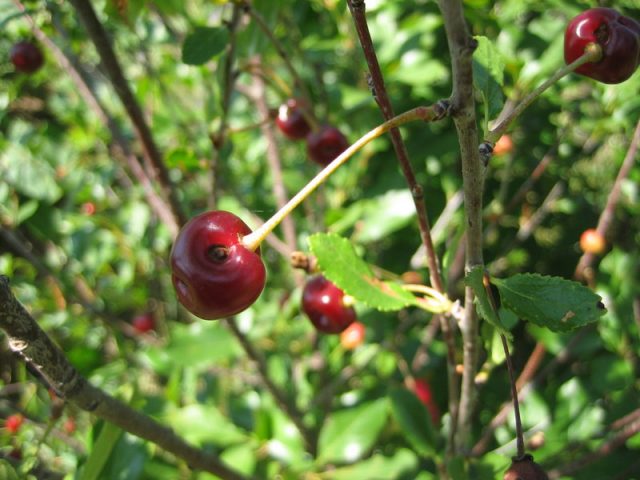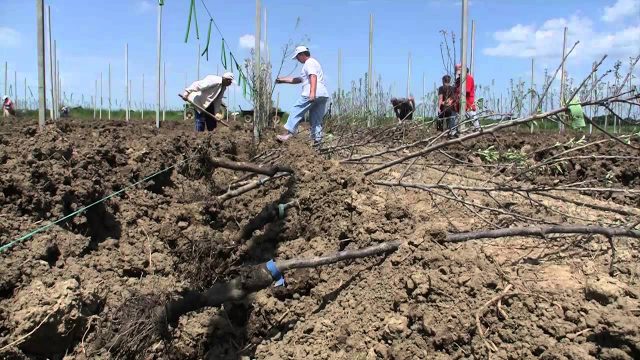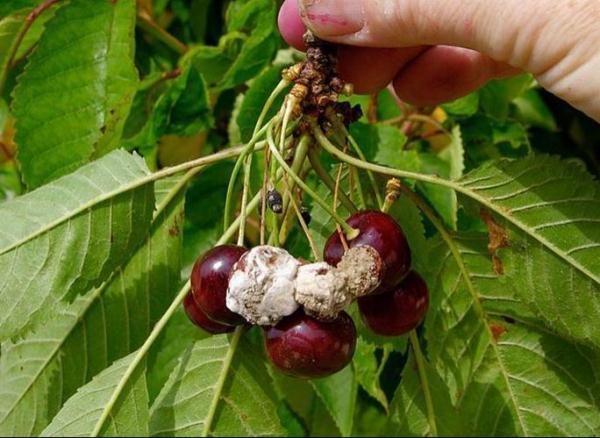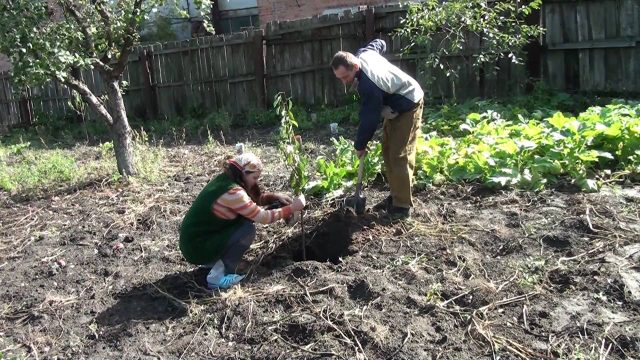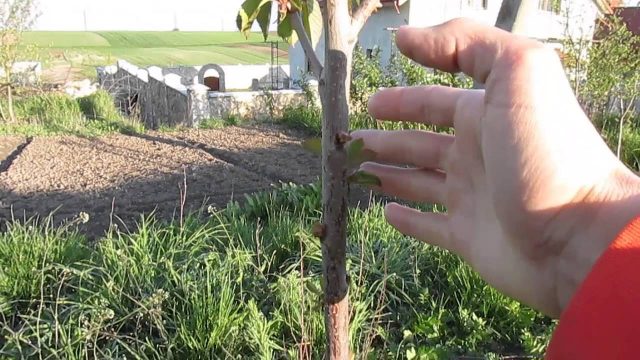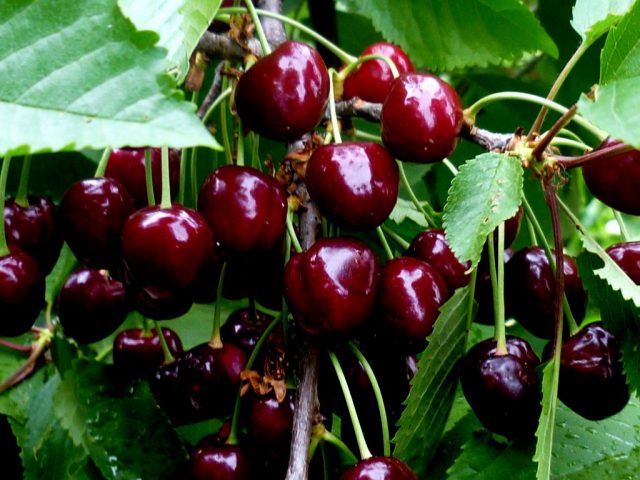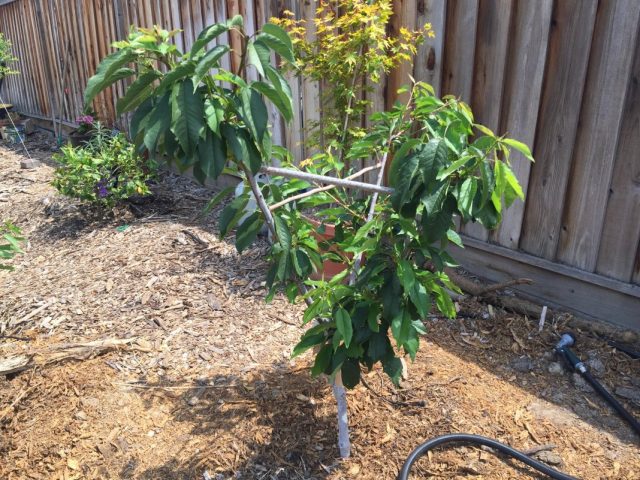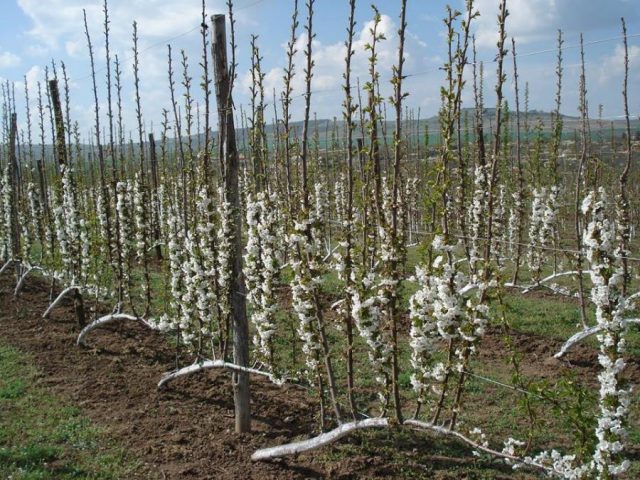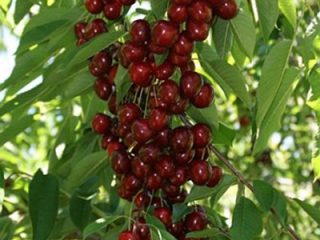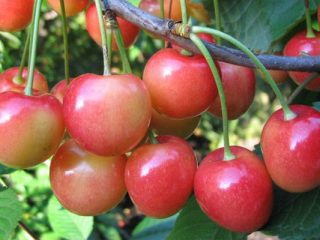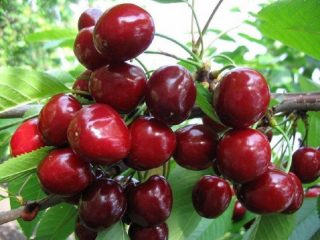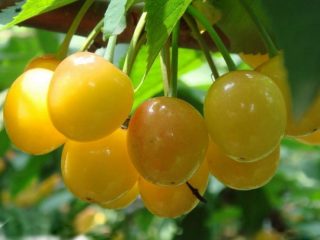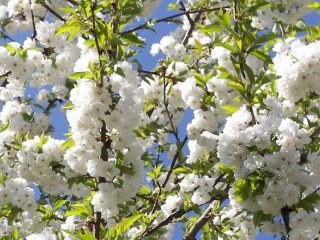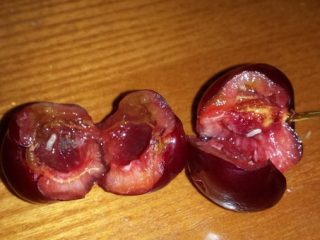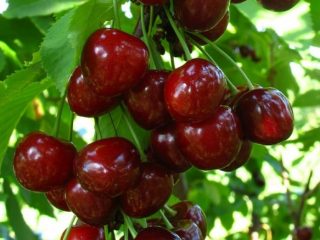Content
Annushka cherry is a variety of fruit crop that is used on the farm. It has special taste qualities. Easily transported, considered high yielding and disease resistant. Pests cannot spoil the harvest, render the fruits and the tree itself unusable.
History of selection
Cherry of this variety planted by private enterprises and farms. Anyone can plant Annushka on their own and achieve good fruiting. This is a mid-early variety that represents the Ukrainian breeding school.
For the first time, the variety was bred in its homeland - at the Donetsk Institute of Horticulture of the UAAS. The author is Tatarenko L.I. In her work, she used cross varieties using pollination, and took the cultures of Donchanka and Valery Chkalov as a base.Unlike its “predecessors,” Annushka cherries are more resistant to frost, which allows harvesting even in late autumn.
In 2000, the Annushka cherry variety was included in the State Register of the Russian Federation for the North Caucasus region of the country. Endurance tests took place there. Annushka has proven to be an ideal crop, especially in climate zones with unstable weather conditions.
Description of culture
The Annushka cherry variety has large fruits - up to 10 grams. This feature allows it to compete with world varieties. The tree of the variety is tall, and its height reaches almost 5 m. The shoots have a straight, thickened shape. They form a spherical crown, which is medium dense.
The buds are mixed, mainly found on growth shoots. The leaves are also different from other cherry varieties. They are large in shape and slightly lightened. The oblong egg-shaped structure of the plate ends with a point and has teeth on the sides. The leaf itself is attached to the trunk by a one and a half centimeter petiole.
Growing Annushka cherries is distinguished by its process, or more precisely, by the sequence in which the inflorescences appear. White flowers have five petals, but they are combined into umbrella inflorescences, usually 4-5 pieces each. But on the shoots the flowers appear before the leaves, which is not typical for other varieties of cherries.
Characteristics
Cherries have great nutritional value. Annushka fruits contain many vitamins. It is worth considering the fruit indicators in more detail:
Taste qualities of cherries | Above average sweetness, dessert taste |
Fruit coloring | Dark, burgundy |
Cherry color and pulp | Juicy pulp with a dense structure, crispy reddish surface |
Annushka fruit shapes | Round shape with a pressed base at the tail |
Structural element | An ordinary drupe, the core with the stone is easily separated from the pulp. The bone is small, takes up less volume compared to other varieties |
In industry, the Annushka cherry variety is highly valued, because after removing the pit, the integrity of the appearance and pulp is not affected, and the shape and inner shell are preserved. This speeds up harvesting work, making harvesting simple. As the speed increases, the presentation is maintained. Also, the characteristics of the Annushka cherry variety are distinguished by a tasting score of 4.9 points on a 5-point scale.
Drought resistance, winter hardiness
The Annushka variety is highly frost-resistant. It can withstand up to -35 0S. Also, Annushka is able to survive even severe drought. Due to the plasticity of the crown, the cherry is self-fertile and retains its taste under any climatic changes.
Pollination, flowering period and ripening time
The flowering period most often occurs in mid-spring. The fruits ripen within a short period of time. It is important to harvest quickly, since everything will go bad in 1-2 weeks. The tree does not tolerate stagnant groundwater, so planting and harvesting should be in an area where the water does not come close to the soil.
Cherry Annushka blooms faster with sufficient light. To ensure rapid ripening, it should be placed on a southern slope. If it rained in the summer, it is important to provide the berries with a flow of warm air. To do this, trees should be planted in open areas. Suitable pollinators for Annushka cherries are those trees that are considered the best for flowers:
- The pistil and stamen of the Shpanka cherry are placed on the same level. It will bear large fruits.
- They also use Shokoladnitsa cherries and baby. They will give an attractive appearance and a large harvest of cherries.
- Drogana yellow and Donetsk coal will give the ability to withstand drought.
- Donetsk beauty will allow cherries to grow even in winter.
There is no need to resort to special pollination methods, since the Annushka cherry is self-fertile.
Productivity, fruiting
Trees produce a rich harvest when cherry seedlings were purchased in the fall and managed to survive the cold. "Hardened off", they will only need to be moistened just three times a year. It is enough to just pour 35 liters of water into the ditch around the Annushka seedling. One-year-old and two-year-old cherry trees need to be tied up and placed 3-4 m from each other. Then the harvest will be in 2-3 years. Cherries bear fruit for a long time, usually several decades. The first berries appear in May, although it blooms even in March-April.
Area of application of berries
Annushka's berries are used in industry by farming companies - for twists for sale. Various dressings, drinks and preservatives are also made from cherries. The Annushka variety is often used in cosmetology medicine.
Resistance to diseases and pests
The Annushka variety tolerates diseases quite well. If care is poorly performed, the following difficulties arise:
- Fungal diseases – occur due to improper landing. The ground and soil can be contaminated by acid rain, which causes the tree to suffer.
- Cherry coccomycosis - appears on leaves that become stained and then dry out. To cure a tree, use “Topaz” 2 ml per 10 liters of liquid. The plant must be treated during flowering.
- Moniliosis Annushka - appears in the form of gray growths. For treatment, Nitrafen is required during the flowering period. Dilute 300 g per 10 liters of water.
- Cherry hole spot – you can heal a tree using “Horus”.
Also, the cherry tree can suffer from various pests. Compared to other varieties, Annushka rarely suffers from damage to the bark and leaves, but it is important to carry out prevention for the longevity of the tree.
Advantages and disadvantages
Despite all the advantages of Annushka, the cherry variety has some disadvantages, although, compared to the advantages, they are almost invisible. It will never grow in swampy areas and zones with a humid climate. For example, cherries will grow better in the north of Russia than in the south, and it is quite difficult for them to tolerate coccomycosis.
Landing Features
Before planting, cherry seedlings should be stored in the basement, in the cold. Planting is carried out in the fall, when the trees are still young and can withstand cold temperatures down to -3 0C. Regarding the remaining recommendations, all details are discussed below.
Recommended timing
It is best to plant in late autumn, but if this is not possible, Annushka cherries can be buried in a snowdrift.
Choosing a suitable location
For successful planting, you need to choose a place where there will be cherries nearby. They must serve as pollinators. Only 5-7 meters away you can plant other plants. It is advisable to dig deep holes to fill with sawdust and grass.
What crops can and cannot be planted next to cherries?
Next to cherries, which are pollinators, you can plant cherries of those varieties that are considered early in flowering. It is not recommended to plant light red, late and winter cherries. You cannot grow flowering plants near a fruit tree.
Selection and preparation of planting material
Young seedlings are used as planting material. Fertilizer is also purchased and poured into the tree hole. The pit should be up to half a meter deep and almost a meter wide.
Landing algorithm
Immediately after digging a hole, you need to fill the bottom with manure (20-25 kg). Over the winter, the fertilizer shrinks. The tree can be planted in early spring. Planting and caring for Annushka cherries also involves choosing nitrates. Agronomists select the necessary substances separately for each region.
The distance between seedlings is 3-4 m. For growth, a stake is inserted 1 m in height. The hole around the tree should hold up to 8 liters of water.
After a year or two, Annushka’s long branches are shortened to medium length. This way the fruiting of cherries will be better. The algorithm is described in detail in the video:
Subsequent care of the crop
After planting, it is important not to forget to care for the cherries:
- Watering Annushka should be done three times during drought, 30 liters of water each time.
- The first watering is done in the spring after frost, the second in the heat. The third is optional.
- Sweet cherries do not need feeding. Only a little fertilizer is needed in winter.
- To form a flat cherry crown, you need to stop the growth of the tree at around 4 m; to do this, cut off the conductor at the required height.
Next comes preparation for winter. In October, cracks on skeletal branches are cleaned with a garden knife. Treat the cherry trunks with a 3% solution of copper sulfate. The wounds are covered with garden varnish.
Diseases and pests, methods of control and prevention
Most often, agronomists face the following problems:
The weevil is a beetle that eats leaves and chews through fruits. | It infects the plant with a fungus | A month and a half before harvesting, you need to treat the leaves with Decis. It is important to remove fallen leaves and rotten fruits in a timely manner.
|
The stalk gnaws right through the fruit | It contributes to fruit drying and infection with fungal diseases. | It is necessary to remove the damaged cherries and treat the remains with Metaphos
|
Cherry shoot moth is very dangerous due to its effects | Because of it, the tree dries out, buds and leaves fall off. It damages the entire “green” part of the cherry | You can get rid of it only with the help of "Karbofos"
|
Conclusion
Annushka cherry is truly the optimal variety for private owners and farmers. It is healthy, the flesh is crispy and sweet. The dessert taste allows you to prepare many delicacies from it. Low maintenance requirements and climatic conditions make it in demand in almost any region and private food sector.

